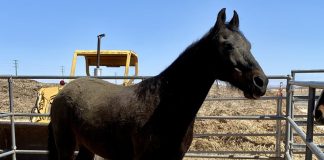As a horse owner, it’s important to understand the types of equine ulcers, symptoms, causes, and treatments, as well as how best to prevent reoccurrence.
Peter Heidmann, DVM, a board-certified internal medicine specialist, and Bryan Dubynsky, DVM, a sport horse medicine specialist, of Palm Beach Equine Clinic in Wellington, Fla., are both experienced in identifying, treating, and helping owners prevent equine ulcers.
According to Heidmann and Dubynsky, equine ulcers can be grouped into two categories: gastric ulcers and hindgut ulcers. The horse can develop one or the other, or both in combination. Gastric ulcers, which are the most common, develop in the stomach, while hindgut ulcers are found in the colon.
Clinical Signs
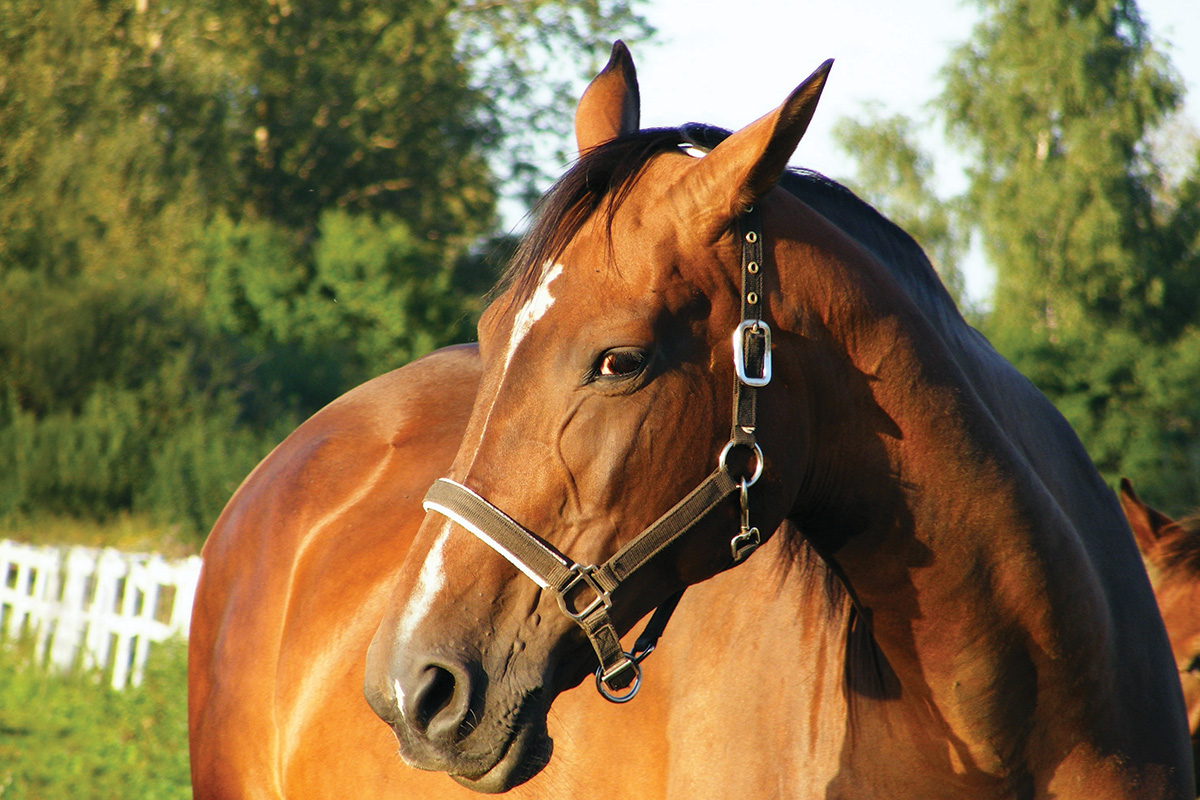
Signs of gastric and hindgut ulcers can range in type and severity. A common indicator of ulcers in many sport horses is poor performance in the arena. Horses may also present symptoms of abdominal discomfort, such as girthiness or even colic. Other more subtle behaviors can also be warning signs.
“A symptom that people do not always realize is that sometimes horses will act like they are sore over their withers,” says Heidmann. “Horses with gastric ulcers will be reluctant to drop down if you pinch their withers because it shifts where the stomach is in their body, and it feels uncomfortable.
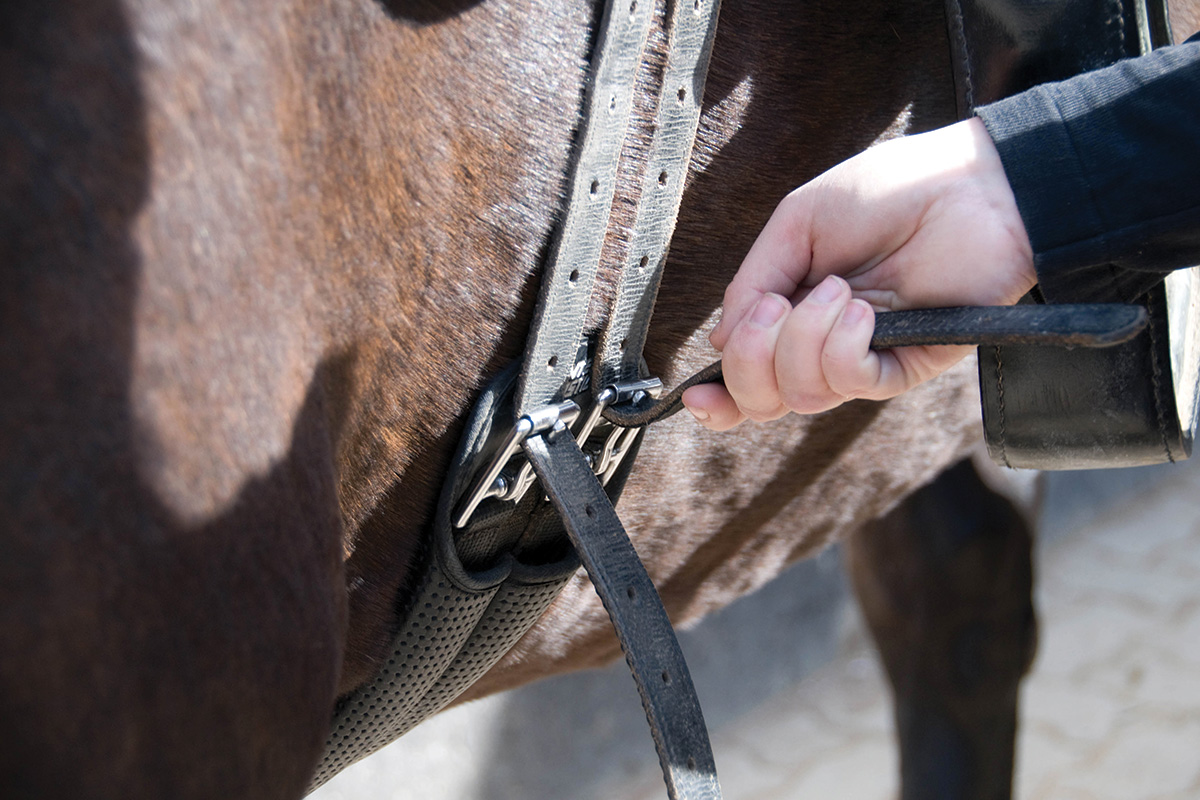
“Another classic sign that sometimes goes under the radar is eating slowly or suddenly becoming a picky eater,” he continues. “The horse may look hungry, walk up to food, take a bite or two, and then walk away from it with a sour look on his face. If I see that while I’m walking through a barn, it’s usually a trigger for me to consider looking into ulcers.”
Causes of Ulcers in Horses
One of the most common causes of gastric ulcers is stress. Some horses internalize their stress more than others, which can make them more prone to developing ulcers.
“Horses who are more worried or are in an environment that doesn’t suit them are at a higher risk for developing ulcers,” says Heidmann. “It’s not as much about breed as it is job, temperament, and environment. Something as simple as stall placement could affect the horse. The lead mare in the big barn might want to be in the middle of everything, whereas another horse may want a quieter stall. Apparently even small things like that are at play.”
Since performance horses are often traveling and put under stress for their job, the risk for gastric ulcers is higher.
“Gastric ulcers can be a significant health concern in sport horses,” says Dubynsky. “Studies show that 50 to 90 percent of all competing horses have gastric ulcers. Intense exercise, dietary changes, stress, and confinement can all contribute to the development of ulcers in these horses.”
In addition to the horse’s stress level, job, and environment, medication can also lead to gastric and hindgut ulcers. For example, chronic administration of non-steroidal anti-inflammatory drugs (NSAIDs) can result in both types of equine ulcers.
Diagnosing Ulcers in a Horse
Once symptoms have been acknowledged, proper diagnosis is the next step. For gastric ulcers, a gastroscopic examination of the stomach in a fasting horse is critical to the process.
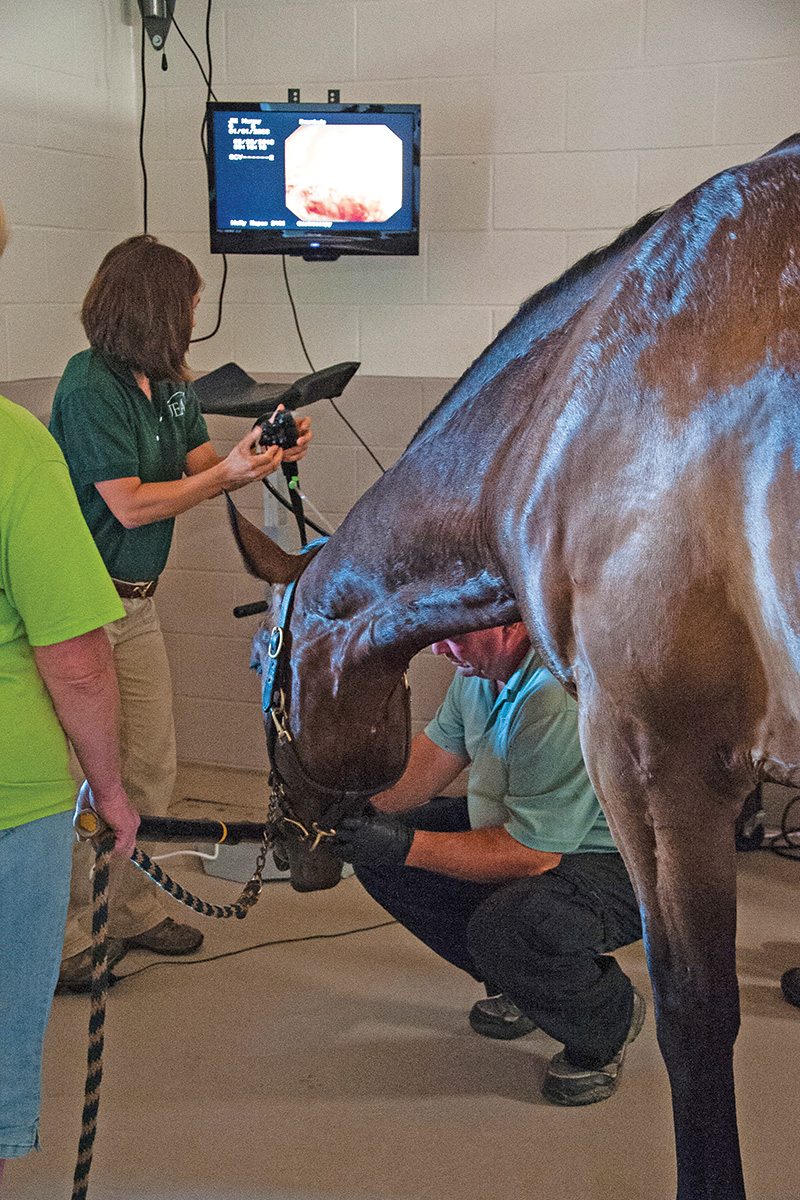
“A gastroscopic exam not only tells you if the horse has ulcers or not, but the procedure helps you determine the severity and location,” explains Heidmann. “This information helps dictate the best treatment plan and what medication we prescribe, for how long, and a plan for prevention in the future.”
A gastroscopic exam is often repeated at the end of a treatment cycle to determine whether it was successful and if the horse needs to remain on medication. The procedure is very safe and can be performed easily.
Hindgut ulcers are more challenging to diagnose. The ideal strategy is a combination of an ultrasound and a fecal blood test.
“Ultrasound allows us to look at the colon, see wall thickness, and then by putting a lot of pieces together, we can infer if there is inflammation or not,” says Heidmann. “You can only see about 60 percent of the colon on an ultrasound because part of it points to the center of the abdomen that you can’t see. This means you can miss things, even with the best technology.”
Since an ultrasound doesn’t always provide a definitive diagnosis, the fecal blood test can be used as well. This test can have a high instance of false positives, so it is best to use it in combination with the ultrasound to determine if the horse has hindgut ulcers.
Treatment Options
Once equine ulcers have been diagnosed, a treatment plan is developed based on the information that has been gathered. Depending on the type and area of the ulcers, different medications may be given.
Omeprazole paste has been shown to be effective for treating gastric ulcers. However, misoprostol can also be added to the treatment regimen, especially for hindgut ulcers.
“There is some research comparing the efficacy of omeprazole products versus misoprostol for treating gastric ulcers in the lower stomach,” says Heidmann. “Depending on where the ulcers are in the stomach, we may do a combination of both medications. If the ulcers are up high in the stomach, then the omeprazole product does very well. If there are ulcers in the glandular and pyloric region of the lower stomach, then we often recommend a combination of both omeprazole and misoprostol.”
Prevention of Ulcers
Once ulcers have been treated, understanding how best to prevent them from reoccurring is critical. This is especially important for performance horses who are more susceptible to developing ulcers as a result of their lifestyle.
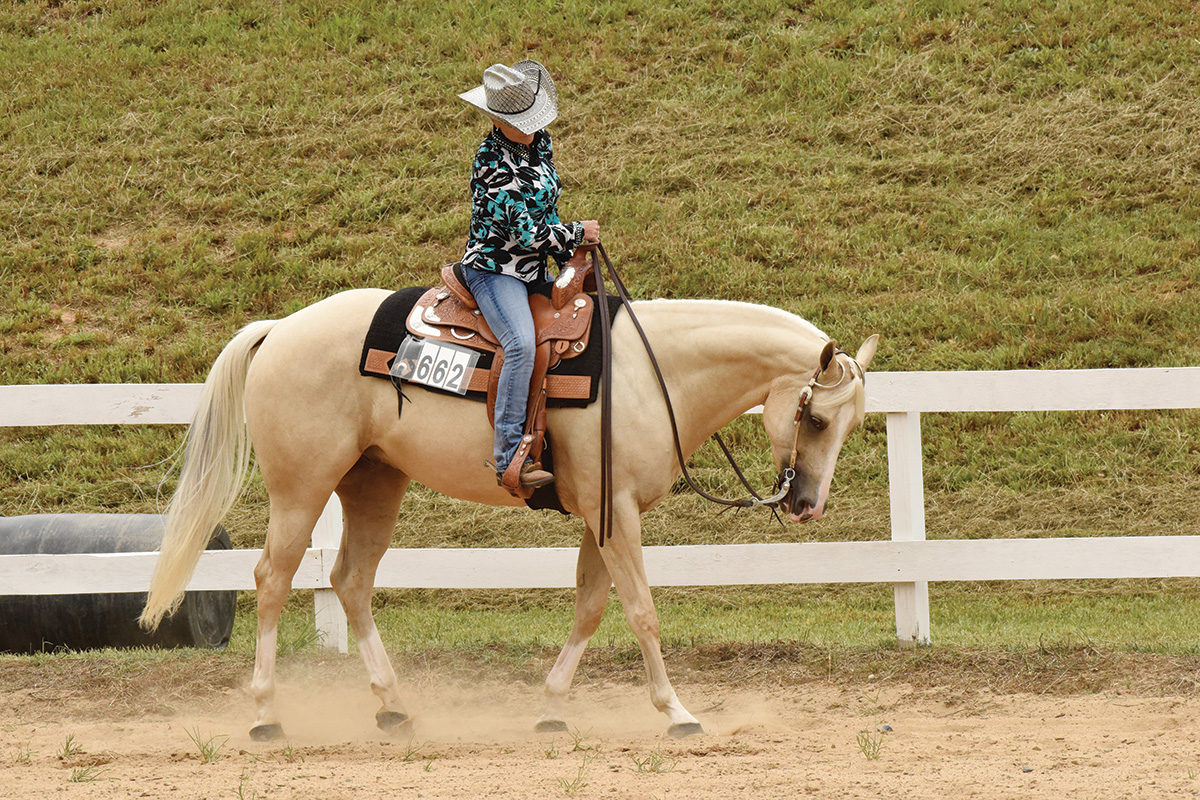
“It is crucial for horse owners and trainers to be vigilant in monitoring their animals’ well-being,” says Dubynsky. “If ulcers are suspected—the first symptom usually being behavior change—it’s important to seek veterinary advice. Proper management practices, such as providing a consistent feeding schedule, reducing stress, and using medications or supplements to support gastric health, can help prevent and manage ulcers in sport horses, ensuring their overall [health] and performance.”
In addition to reducing stress, one of the most important ways to help prevent ulcers is allowing horses to have free-choice access to pasture grazing or hay. This increases the buffering effect of constant saliva production, meaning the high pH of equine saliva helps neutralize the low pH of stomach acid. Additionally, a soft hay such as orchard grass may help to relieve discomfort with hindgut ulcers.
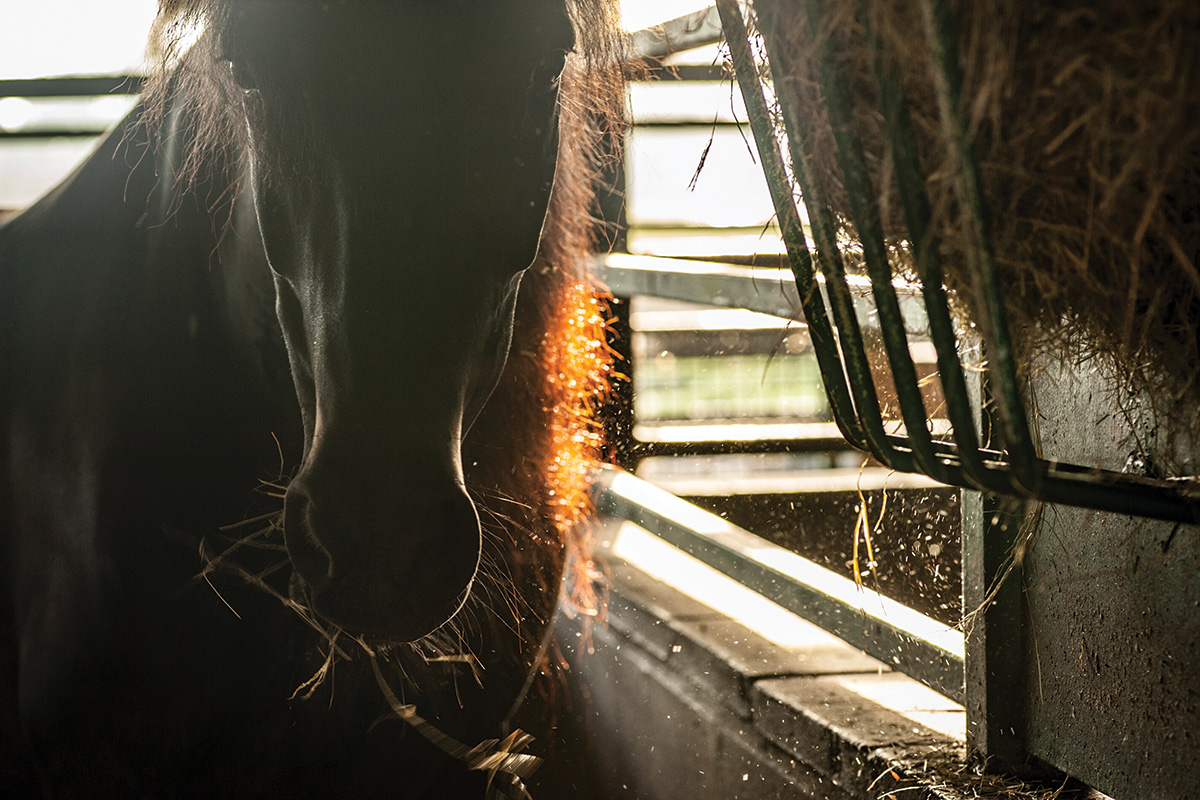
“Horses evolved to be grazing 16 to 19 hours of the day,” says Heidmann. “When we domesticate horses, put them in a barn, and feed them a few flakes three times a day, the risk for ulcers goes way up. When horses can continuously graze, it also allows saliva—produced by grazing—to be a buffering agent. Saliva is very protective of the stomach.”
Some feed adjustments may help prevent ulcers. Try to avoid high-sugar feeds that make the stomach more acidic as a result of the feedstuff being digested.
Adding alfalfa hay or pellets to a horse’s feeding program may reduce the incidence of gastric ulcers as well. Alfalfa has less sugar than grass, is energy-dense, and contains high levels of calcium and magnesium—think “Tums for horses.”
If you suspect ulcers, it’s important to discuss diagnostic and treatment options with your veterinarian immediately. The best approach for horse owners is to be aware of the clinical signs of equine ulcers in order to prevent this debilitating disease.
This article about sand colic appeared in the June 2023 issue of Horse Illustrated magazine. Click here to subscribe!
These Horse Care Tips are presented by CareCredit.





